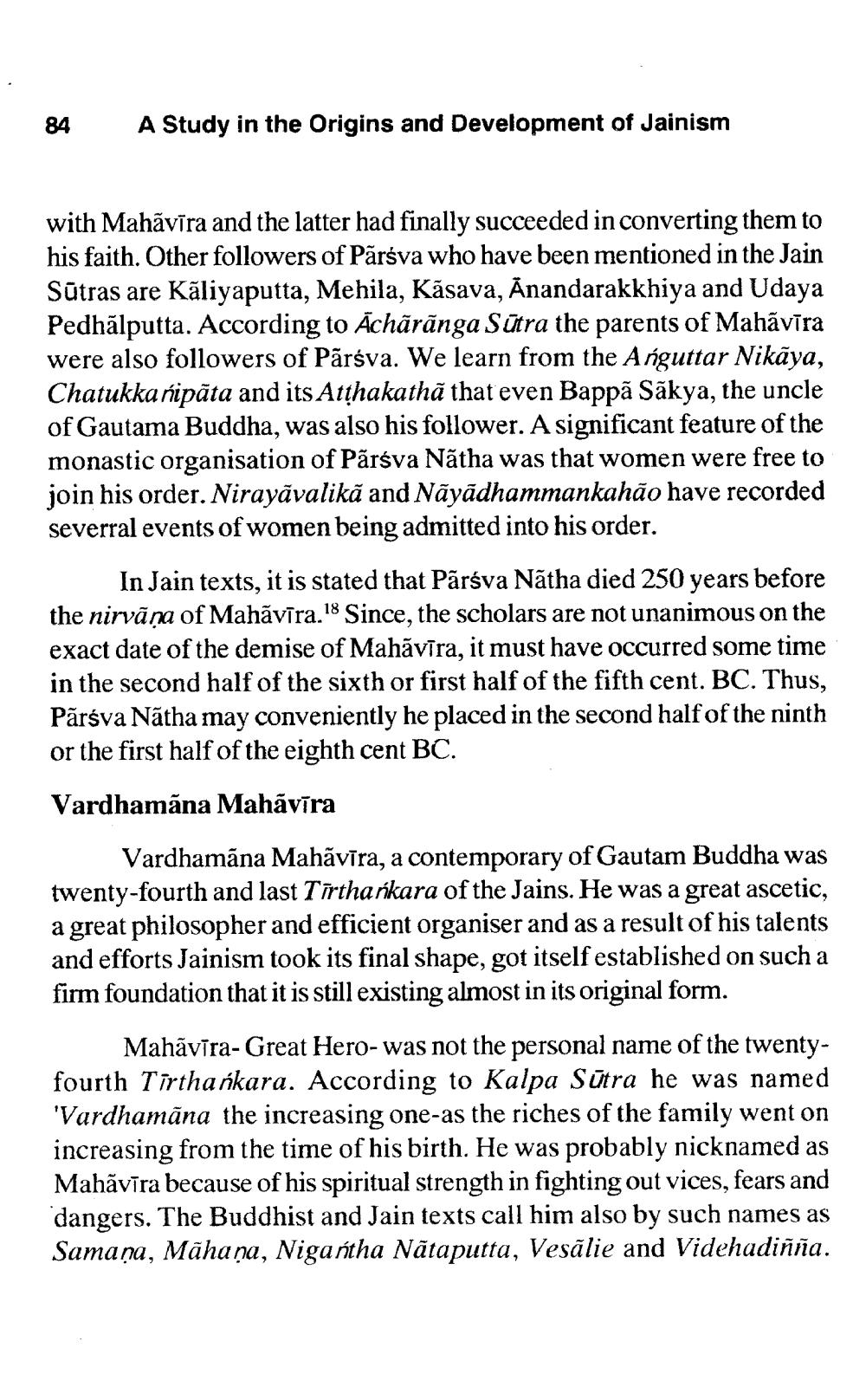________________
84
A Study in the Origins and Development of Jainism
with Mahāvīra and the latter had finally succeeded in converting them to his faith. Other followers of Pārsva who have been mentioned in the Jain Sūtras are Kāliyaputta, Mehila, Kısava, Anandarakkhiya and Udaya Pedhâlputta. According to Achārănga Sūtra the parents of Mahāvīra were also followers of Pārsva. We learn from the Anguttar Nikāya, Chatukkanipāta and its Atthakathì that even Bappã Sãkya, the uncle of Gautama Buddha, was also his follower. A significant feature of the monastic organisation of Pārsva Nãtha was that women were free to join his order. Nirayāvalikã and Nāyādhammankahão have recorded severral events of women being admitted into his order.
In Jain texts, it is stated that Pārśva Nãtha died 250 years before the nirvāņa of Mahāvīra.18 Since, the scholars are not unanimous on the exact date of the demise of Mahāvīra, it must have occurred some time in the second half of the sixth or first half of the fifth cent. BC. Thus, Pārśva Nãtha may conveniently he placed in the second half of the ninth or the first half of the eighth cent BC. Vardhamana Mahāvīra
Vardhamana Mahāvīra, a contemporary of Gautam Buddha was twenty-fourth and last Tirthařkara of the Jains. He was a great ascetic, a great philosopher and efficient organiser and as a result of his talents and efforts Jainism took its final shape, got itself established on such a firm foundation that it is still existing almost in its original form.
Mahāvīra-Great Hero- was not the personal name of the twentyfourth Tirthańkara. According to Kalpa Sūtra he was named 'Vardhamāna the increasing one-as the riches of the family went on increasing from the time of his birth. He was probably nicknamed as Mahāvīra because of his spiritual strength in fighting out vices, fears and dangers. The Buddhist and Jain texts call him also by such names as Samaņa, Māhaņa, Nigaắtha Nātaputta, Vesālie and Videhadiñña.




